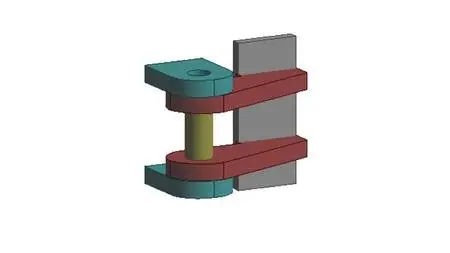Intermediate Structural Steel Prokon Sumo Modeling
Last updated 2023-02-11
Duration: 01:09:15 | .MP4 1280x720, 30 fps(r) | AAC, 44100 Hz, 2ch | 700 MB
Genre: eLearning | Language: English [Auto]
Last updated 2023-02-11
Duration: 01:09:15 | .MP4 1280x720, 30 fps(r) | AAC, 44100 Hz, 2ch | 700 MB
Genre: eLearning | Language: English [Auto]
Structural Steel Door Hinge Modeling
What you'll learn
Modeling of a structural steel door hinge
Analyzing the results obtained from the model
Design checks
Reporting the results
Requirements
Understanding of Basic Prokon Sumo Modeling software
Structural/Civil Engineering background
Description
The Intermediate Structural Steel Prokon Sumo Modeling course focuses on creating a 3D BIM model of a steel door hinge system using the latest generation of analysis and design tool, Prokon Sumo. The course covers the entire modeling process, from project debriefing to reporting.
In the project debrief, the needs of the client are evaluated, and the objectives of the modeling project are established. The modeling phase provides a step-by-step guide to creating the door hinge model. During the analyzing phase, the results of the model are analyzed. Finally, in the reporting phase, the model is reported using the built-in Prokon reporting tools.
The course emphasizes the modeling of small, yet complex components, such as odd-shaped plates. Attention is given to the plate thickness and how it affects the load capacity of the door hinge.
Why is the plate thickness important?
Plate thickness must be calculated to provide enough strength to resist forces while minimizing deflection. Deflection is a critical factor in designing structural steel components as it affects the stability and safety of the structure. Excessive deflection from a thin plate can lead to structural failure, while a thick plate is unnecessarily heavy and increases cost without providing additional benefit. To control deflection, the designer must consider factors such as expected loads, span length, and support conditions and aim to achieve an appropriate plate thickness that meets the intended purpose, is safe, and cost-effective.
By the end of the course, participants will have gained the skills to use Prokon Sumo modeling in their daily work as a design engineer, allowing them to incorporate this powerful tool into their design process.
For a basic structural steel model please refer to the Basic Structural Steel Prokon Sumo Modeling course.
Who this course is for:
Structural/Civil Engineers
Intermediate Prokon Sumo Modelers
More Info



